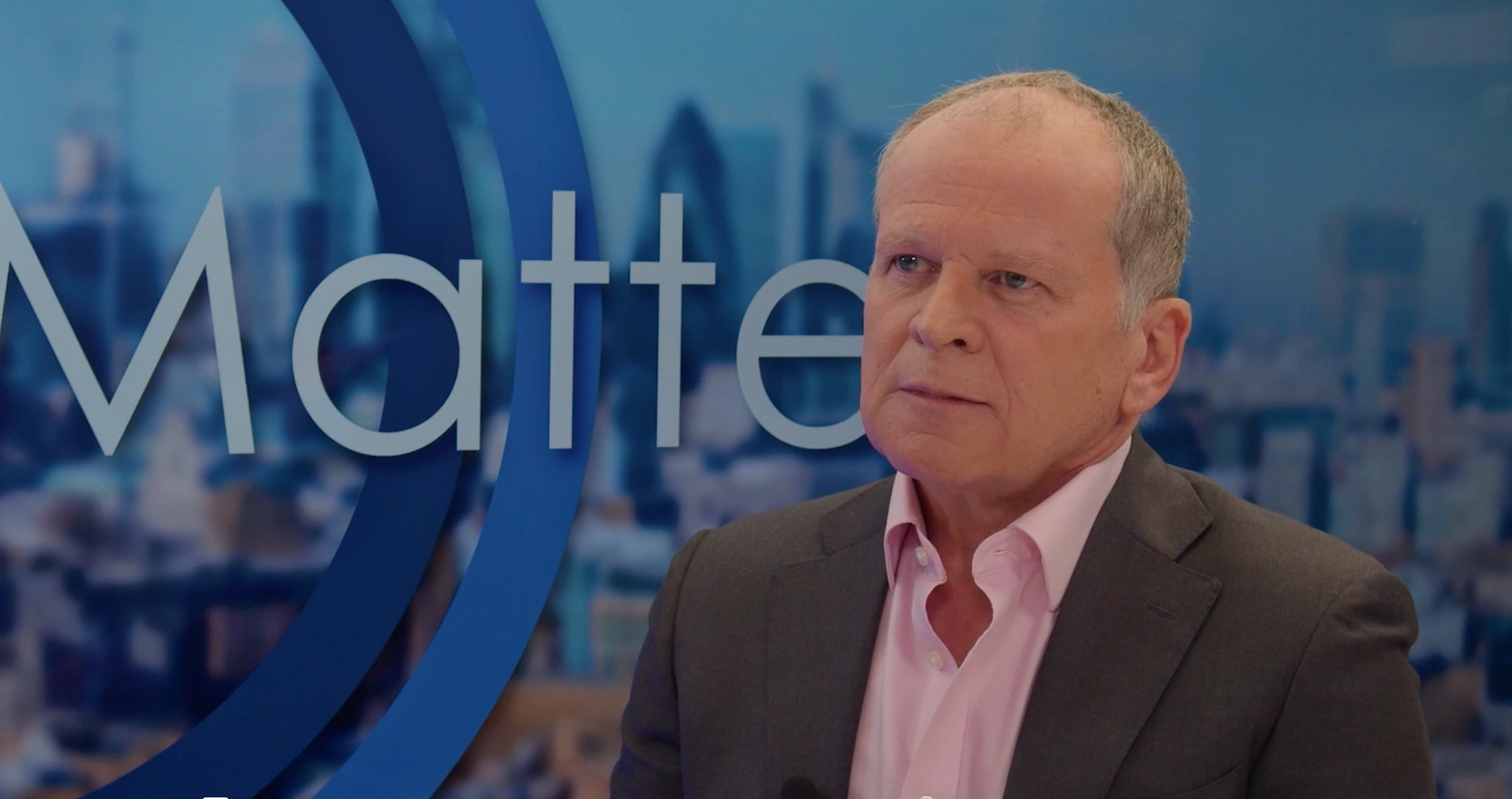Automatically sorted

John E. Kaye
- Published
- Technology

While out of sight and mind for most consumers, waste management plays an essential role in modern society. According to a 2015 OECD report, municipal waste in developed OECD countries now exceeds 650 million tonnes per year – 19% more than in 1990. As awareness of the environmental impact of the waste we produce becomes more widespread, there’s growing political and social demand to minimise its impact and make greater use of it.
Recycling is the obvious solution here. Workers at recycling plants are trained to spot recyclable materials in a ‘picking line’ waste stream and move it manually to separate containers where it can be cleaned and eventually reused. However, the work is hard, dirty and dangerous. Salaries for recycling plant operatives start at a lowly £13k in the UK, and the nature of the work means there is a high turnover of staff at processing plants.
In response to these two problems, a small number of technology start-ups are proposing a new solution: deploying artificial intelligence (AI) machines to carry out the sorting of waste. Far more sophisticated than the existing machinery in recycling plants, which simply repeat pre-programmed actions, AI-enabled robots can learn about the work they are doing and adapt to changing waste in their streams.
Training technology
Founded in 2010 with the aim to “generate technology for a better world”, Spanish firm Sadako Technologies combines a knowledge of robotics with their own computer vision technology. The company initially designed their own robot, but have now teamed up their AI software with US company Bulk Handling Systems, to create an advanced sorting robot named Max-AI.
Sadako developed a “deep learning” technology, which allows the machine to spot whether an object in the stream passing beneath it is made of one material or another. The technology is initially trained by being presented with hundreds of images of different materials. However, it can also estimate whether a new material which it hasn’t ‘seen’ before is made of plastic, wood, cardboard or paper, for instance, then sort this correspondingly.
Belén Garnica, Sadako’s Finance Director explains: “Sadako’s detection technology can recognise an incredibly wide range of items and categories, virtually as well as a human eye. We only need to train it accordingly.”
Most impressively, the technology is able to detect whether objects of different shapes and sizes are made of the same material.
Garnica continues: “It’s able to differentiate objects of the same material but with a different use or shape. A typical example is the ability to sort PET trays from PET bottles. We are often asked about what the technology could and could not distinguish, and the answer is always the same: if a person can differentiate it, Max-AI can differentiate it.”
And Max-AI is fast –Garnica boasts it can pick up and sort up to 80 objects a minute – far faster than the average human.
Another leading firm in the market is ZenRobotics. Company CEO Timo Talaas explains that the firm’s founders had a background in robotics and AI, and wanted to use these skills to solve real-world problems. The Finnish firm entered the recycling market 10 years ago at the opposite end to Sadako, focusing specifically on bulkier industrial objects – although they are developing products for other waste streams.
A video on ZenRobotics’ website shows the product in action, all snake-like arms with claws grabbing metal bars, planks of wood and stone debris, and tossing these into separate containers. Talaas says the firm can train up the technology to recognise what is in the stream in as little as two days, which is a huge advance on previous methods: “Compared to traditional mechanical devices, we offer a much higher purity of sorting. For example, in the past, machines might have been able to separate wooden material out from the rest of the stream, yet it would have still required humans to sort between wood of different qualities,” he says.
This ability to differentiate between different qualities of material is extremely valuable for recycling firms, as they are then able to sell this material back into the market, contributing to the so-called circular economy.
ZenRobotics’ use of AI also helps recycling companies adapt to changing regulations or the arrival of new materials in the product stream. If, for instance, a law has been passed that says ‘material A’ must be separated and disposed of differently, ZenRobotics’ arms can be taught to change their behaviour accordingly – something would not have been possible with traditional mechanical machines.
Fully automated future
Sarahjane Widdowson, Principal Consultant at Ricardo Energy & Environment, a consultancy firm, puts these technologies in the broader context of the fourth industrial revolution, powered by robotics: “Robotics have been used in the recycling sector for over a decade now with varying degrees of success, but the advancement here is the application of AI.”
Widdowson cites a recent industry survey by ISWA (the International Solid Waste Association), which found 80% of respondents expect to see fully robotic sorting for solid waste by 2030.
When asked about the threat their products pose to existing jobs in recycling plants, both ZenRobotics and Sadako are optimistic. Ms Garnica of Sadako says automation is a trend across industries, and that “waste sorting includes many tasks with three Ds (dirty, dull and dangerous) that are typical targets of work that would be better done by a machine. Of course, some task will always need a human in the loop, but we expect many of the hard and hazardous tasks to be done by machines in the future.”
While she acknowledges that some jobs may be “redefined”, she says there will always be a role for humans in the process.
What’s more, if such technologies can be used to increase the amount of goods we recycle, the long-term benefits to the environment should be considerable.
Mr Talaas of ZenRobotics agrees that recycling plants are dusty and dangerous environments – workers in the industrial waste recycling sector have to regularly pick up pieces of debris weighting up to 30kg – surely a job better suited to a machine.
Although some jobs may be lost, he argues that AI is “bringing completely new jobs,” by creating new businesses. Firms that can sell on valuable items extracted from the waste flow by AI robots will generate more income and new jobs.
The potential of AI and robotics to increase the amount of waste that is recycled is an exciting development. That said, both Sadako and ZenRobotics recognise that there are challenges in encouraging adoption of the technology – whether it is the initial cost of a new installation, or doubts among investors of whether these tools can really do what their manufacturers claim.
Nonetheless, both companies report healthy turnovers and interest from the wider industry. Ricardo Energy & Environment predict that many more examples will come to the market in the next couple of years, and will cover not just robotics and the Internet of Things, but areas such as autonomous vehicles, new materials and augmented reality. And Sadako and ZenRobotics both report steady growth, while the results speak for themselves. As industry continues to adapt the influence of AI, it seems waste recycling plants are one place that robots are most welcome.
Sign up to The European Newsletter
RECENT ARTICLES
-
 Make boards legally liable for cyber attacks, security chief warns
Make boards legally liable for cyber attacks, security chief warns -
 AI innovation linked to a shrinking share of income for European workers
AI innovation linked to a shrinking share of income for European workers -
 Europe emphasises AI governance as North America moves faster towards autonomy, Digitate research shows
Europe emphasises AI governance as North America moves faster towards autonomy, Digitate research shows -
 Surgeons just changed medicine forever using hotel internet connection
Surgeons just changed medicine forever using hotel internet connection -
 Curium’s expansion into transformative therapy offers fresh hope against cancer
Curium’s expansion into transformative therapy offers fresh hope against cancer -
 What to consider before going all in on AI-driven email security
What to consider before going all in on AI-driven email security -
 GrayMatter Robotics opens 100,000-sq-ft AI robotics innovation centre in California
GrayMatter Robotics opens 100,000-sq-ft AI robotics innovation centre in California -
 The silent deal-killer: why cyber due diligence is non-negotiable in M&As
The silent deal-killer: why cyber due diligence is non-negotiable in M&As -
 South African students develop tech concept to tackle hunger using AI and blockchain
South African students develop tech concept to tackle hunger using AI and blockchain -
 Automation breakthrough reduces ambulance delays and saves NHS £800,000 a year
Automation breakthrough reduces ambulance delays and saves NHS £800,000 a year -
 ISF warns of a ‘corporate model’ of cybercrime as criminals outpace business defences
ISF warns of a ‘corporate model’ of cybercrime as criminals outpace business defences -
 New AI breakthrough promises to end ‘drift’ that costs the world trillions
New AI breakthrough promises to end ‘drift’ that costs the world trillions -
 Watch: driverless electric lorry makes history with world’s first border crossing
Watch: driverless electric lorry makes history with world’s first border crossing -
 UK and U.S unveil landmark tech pact with £250bn investment surge
UK and U.S unveil landmark tech pact with £250bn investment surge -
 International Cyber Expo to return to London with global focus on digital security
International Cyber Expo to return to London with global focus on digital security -
 Cybersecurity talent crunch drives double-digit pay rises as UK firms count cost of breaches
Cybersecurity talent crunch drives double-digit pay rises as UK firms count cost of breaches -
 Investors with €39bn AUM gather in Bologna to back Italy’s next tech leaders
Investors with €39bn AUM gather in Bologna to back Italy’s next tech leaders -
 Axians and Nokia expand partnership to strengthen communications infrastructure across EMEA
Axians and Nokia expand partnership to strengthen communications infrastructure across EMEA -
 Forterro buys Spain’s Inology to expand southern Europe footprint
Forterro buys Spain’s Inology to expand southern Europe footprint -
 Singapore student start-up wins $1m Hult Prize for education platform
Singapore student start-up wins $1m Hult Prize for education platform -
 UK businesses increase AI investment despite economic uncertainty, Barclays index finds
UK businesses increase AI investment despite economic uncertainty, Barclays index finds -
 Speed-driven email security: effective tactics for phishing mitigation
Speed-driven email security: effective tactics for phishing mitigation -
 Short circuit: humanoids go for gold at first 'Olympics for robots'
Short circuit: humanoids go for gold at first 'Olympics for robots' -
 New IBM–NASA AI aims to forecast solar flares before they knock out satellites or endanger astronauts
New IBM–NASA AI aims to forecast solar flares before they knock out satellites or endanger astronauts -
 AI is powering the most convincing scams you've ever seen
AI is powering the most convincing scams you've ever seen



























